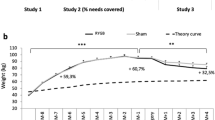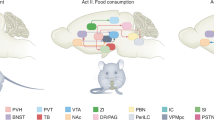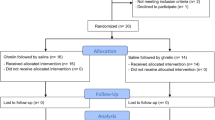Abstract
Roux-en-Y gastric bypass surgery (RYGB) remains to be the most effective long-term treatment for obesity and its associated comorbidities, but the specific mechanisms involved remain elusive. Because RYGB patients appear to no longer be preoccupied with thoughts about food and are satisfied with much smaller meals and calorically dilute foods, brain reward mechanisms could be involved. Just as obesity can produce maladaptive alterations in reward functions, reversal of obesity by RYGB could normalize these changes or even further reset the food reward system through changes in gut hormone secretion, aversive conditioning and/or secondary effects of weight loss. Future studies with longitudinal assessments of reward behaviors and their underlying neural circuits before and after surgery will be necessary to uncover the specific mechanisms involved. Such new insights could be the base for future ‘knifeless’ pharmacological and behavioral approaches to obesity.
This is a preview of subscription content, access via your institution
Access options
Subscribe to this journal
Receive 12 print issues and online access
$259.00 per year
only $21.58 per issue
Buy this article
- Purchase on Springer Link
- Instant access to full article PDF
Prices may be subject to local taxes which are calculated during checkout

Similar content being viewed by others
References
de Castro JM . The control of food intake of free-living humans: putting the pieces back together. Physiol Behav 2010; 100: 446–453.
Kenler HA, Brolin RE, Cody RP . Changes in eating behavior after horizontal gastroplasty and Roux-en-Y gastric bypass. Am J Clin Nutr 1990; 52: 87–92.
Olbers T, Bjorkman S, Lindroos A, Maleckas A, Lonn L, Sjostrom L et al. Body composition, dietary intake, and energy expenditure after laparoscopic Roux-en-Y gastric bypass and laparoscopic vertical banded gastroplasty: a randomized clinical trial. Ann Surg 2006; 244: 715–722.
Ernst B, Thurnheer M, Wilms B, Schultes B . Differential changes in dietary habits after gastric bypass versus gastric banding operations. Obes Surg 2009; 19: 274–280.
Thomas JR, Marcus E . High and low fat food selection with reported frequency intolerance following Roux-en-Y gastric bypass. Obes Surg 2008; 18: 282–287.
Stice E, Spoor S, Ng J, Zald DH . Relation of obesity to consummatory and anticipatory food reward. Physiol Behav 2009; 97: 551–560.
Geiger BM, Haburcak M, Avena NM, Moyer MC, Hoebel BG, Pothos EN . Deficits of mesolimbic dopamine neurotransmission in rat dietary obesity. Neuroscience 2009; 159: 1193–1199.
Davis C, Carter JC . Compulsive overeating as an addiction disorder. A review of theory and evidence. Appetite 2009; 53: 1–8.
Avena NM, Rada P, Hoebel BG . Evidence for sugar addiction: behavioral and neurochemical effects of intermittent, excessive sugar intake. Neurosci Biobehav Rev 2008; 32: 20–39.
Volkow ND, Wang GJ, Fowler JS, Telang F . Overlapping neuronal circuits in addiction and obesity: evidence of systems pathology. Philos Trans R Soc Lond B Biol Sci 2008; 363: 3191–3200.
Kelley AE, Berridge KC . The neuroscience of natural rewards: relevance to addictive drugs. J Neurosci 2002; 22: 3306–3311.
Rankinen T, Zuberi A, Chagnon YC, Weisnagel SJ, Argyropoulos G, Walts B et al. The human obesity gene map: the 2005 update. Obesity (Silver Spring) 2006; 14: 529–644.
Davis CA, Levitan RD, Reid C, Carter JC, Kaplan AS, Patte KA et al. Dopamine for ‘wanting’ and opioids for ‘liking’: a comparison of obese adults with and without binge eating. Obesity (Silver Spring) 2009; 17: 1220–1225.
Davis C, Levitan RD, Kaplan AS, Carter J, Reid C, Curtis C et al. Reward sensitivity and the D2 dopamine receptor gene: a case-control study of binge eating disorder. Prog Neuropsychopharmacol Biol Psychiatry 2008; 32: 620–628.
Stice E, Spoor S, Bohon C, Small DM . Relation between obesity and blunted striatal response to food is moderated by TaqIA A1 allele. Science 2008; 322: 449–452.
Felsted JA, Ren X, Chouinard-Decorte F, Small DM . Genetically determined differences in brain response to a primary food reward. J Neurosci 2010; 30: 2428–2432.
Davis JF, Tracy AL, Schurdak JD, Tschop MH, Lipton JW, Clegg DJ et al. Exposure to elevated levels of dietary fat attenuates psychostimulant reward and mesolimbic dopamine turnover in the rat. Behav Neurosci 2008; 122: 1257–1263.
Fulton S, Pissios P, Manchon RP, Stiles L, Frank L, Pothos EN et al. Leptin regulation of the mesoaccumbens dopamine pathway. Neuron 2006; 51: 811–822.
Farooqi IS, Bullmore E, Keogh J, Gillard J, O’Rahilly S, Fletcher PC . Leptin regulates striatal regions and human eating behavior. Science 2007; 317: 1355.
Blum K, Braverman ER, Holder JM, Lubar JF, Monastra VJ, Miller D et al. Reward deficiency syndrome: a biogenetic model for the diagnosis and treatment of impulsive, addictive, and compulsive behaviors. J Psychoactive Drugs 2000; 32 (Suppl): i–iv, 1–112.
Ahima RS, Qi Y, Singhal NS, Jackson MB, Scherer PE . Brain adipocytokine action and metabolic regulation. Diabetes 2006; 55 (Suppl 2): S145–S154.
Posey KA, Clegg DJ, Printz RL, Byun J, Morton GJ, Vivekanandan-Giri A et al. Hypothalamic proinflammatory lipid accumulation, inflammation, and insulin resistance in rats fed a high-fat diet. Am J Physiol Endocrinol Metab 2009; 296: E1003–E1012.
Farr SA, Yamada KA, Butterfield DA, Abdul HM, Xu L, Miller NE et al. Obesity and hypertriglyceridemia produce cognitive impairment. Endocrinology 2008; 149: 2628–2636.
Kleinridders A, Schenten D, Konner AC, Belgardt BF, Mauer J, Okamura T et al. MyD88 signaling in the CNS is required for development of fatty acid-induced leptin resistance and diet-induced obesity. Cell Metab 2009; 10: 249–259.
De Souza CT, Araujo EP, Bordin S, Ashimine R, Zollner RL, Boschero AC et al. Consumption of a fat-rich diet activates a proinflammatory response and induces insulin resistance in the hypothalamus. Endocrinology 2005; 146: 4192–4199.
de la Monte SM . Insulin resistance and Alzheimer's disease. BMB Rep 2009; 42: 475–481.
Dugan LL, Ali SS, Shekhtman G, Roberts AJ, Lucero J, Quick KL et al. IL-6 mediated degeneration of forebrain GABAergic interneurons and cognitive impairment in aged mice through activation of neuronal NADPH oxidase. PLoS One 2009; 4: e5518.
de la Monte SM, Wands JR . Alzheimer's disease is type 3 diabetes-evidence reviewed. J Diabetes Sci Technol 2008; 2: 1101–1113.
Skaper SD . The brain as a target for inflammatory processes and neuroprotective strategies. Ann N Y Acad Sci 2007; 1122: 23–34.
Sriram K, Benkovic SA, Miller DB, O’Callaghan JP . Obesity exacerbates chemically induced neurodegeneration. Neuroscience 2002; 115: 1335–1346.
Hu G, Jousilahti P, Nissinen A, Antikainen R, Kivipelto M, Tuomilehto J . Body mass index and the risk of Parkinson disease. Neurology 2006; 67: 1955–1959.
Burge JC, Schaumburg JZ, Choban PS, DiSilvestro RA, Flancbaum L . Changes in patients’ taste acuity after Roux-en-Y gastric bypass for clinically severe obesity. J Am Diet Assoc 1995; 95: 666–670.
Scruggs DM, Buffington C, Cowan Jr GS . Taste acuity of the morbidly obese before and after gastric bypass surgery. Obes Surg 1994; 4: 24–28.
Naslund E, Melin I, Gryback P, Hagg A, Hellstrom PM, Jacobsson H et al. Reduced food intake after jejunoileal bypass: a possible association with prolonged gastric emptying and altered gut hormone patterns. Am J Clin Nutr 1997; 66: 26–32.
Zheng H, Shin AC, Lenard NR, Townsend RL, Patterson LM, Sigalet DL et al. Meal patterns, satiety, and food choice in a rat model of Roux-en-Y gastric bypass surgery. Am J Physiol Regul Integr Comp Physiol 2009; 297: R1273–R1282.
Shin AC, Zheng H, Townsend RL, Sigalet DL, Berthoud HR . Meal-induced hormone responses in a rat model of Roux-en-Y gastric bypass surgery. Endocrinology 2010; 151: 1588–1597.
Hajnal A, Kovacs P, Ahmed TA, Meirelles K, Lynch CJ, Cooney RN . Gastric bypass surgery alters behavioral and neural taste functions for sweet taste in obese rats. Am J Physiol Gastrointest Liver Physiol 2010; 299: G967–G979.
Xu Y, Ohinata K, Meguid MM, Marx W, Tada T, Chen C et al. Gastric bypass model in the obese rat to study metabolic mechanisms of weight loss. J Surg Res 2002; 107: 56–63.
Rosenbaum M, Sy M, Pavlovich K, Leibel RL, Hirsch J . Leptin reverses weight loss-induced changes in regional neural activity responses to visual food stimuli. J Clin Invest 2008; 118: 2583–2591.
Hommel JD, Trinko R, Sears RM, Georgescu D, Liu ZW, Gao XB et al. Leptin receptor signaling in midbrain dopamine neurons regulates feeding. Neuron 2006; 51: 801–810.
Figlewicz DP . Adiposity signals and food reward: expanding the CNS roles of insulin and leptin. Am J Physiol Regul Integr Comp Physiol 2003; 284: R882–R892.
Shigemura N, Ohta R, Kusakabe Y, Miura H, Hino A, Koyano K et al. Leptin modulates behavioral responses to sweet substances by influencing peripheral taste structures. Endocrinology 2004; 145: 839–847.
Julliard AK, Chaput MA, Apelbaum A, Aime P, Mahfouz M, Duchamp-Viret P . Changes in rat olfactory detection performance induced by orexin and leptin mimicking fasting and satiation. Behav Brain Res 2007; 183: 123–129.
Getchell TV, Kwong K, Saunders CP, Stromberg AJ, Getchell ML . Leptin regulates olfactory-mediated behavior in ob/ob mice. Physiol Behav 2006; 87: 848–856.
Diano S, Farr SA, Benoit SC, McNay EC, da Silva I, Horvath B et al. Ghrelin controls hippocampal spine synapse density and memory performance. Nat Neurosci 2006; 9: 381–388.
Abizaid A, Liu ZW, Andrews ZB, Shanabrough M, Borok E, Elsworth JD et al. Ghrelin modulates the activity and synaptic input organization of midbrain dopamine neurons while promoting appetite. J Clin Invest 2006; 116: 3229–3239.
Jerlhag E, Egecioglu E, Dickson SL, Douhan A, Svensson L, Engel JA . Ghrelin administration into tegmental areas stimulates locomotor activity and increases extracellular concentration of dopamine in the nucleus accumbens. Addict Biol 2007; 12: 6–16.
Author information
Authors and Affiliations
Corresponding author
Ethics declarations
Competing interests
H-R Berthoud received consulting fees from Mars Petfoods Inc. and AstraZeneca. AC Shin declares no conflict of interest.
Rights and permissions
About this article
Cite this article
Shin, A., Berthoud, HR. Food reward functions as affected by obesity and bariatric surgery. Int J Obes 35 (Suppl 3), S40–S44 (2011). https://doi.org/10.1038/ijo.2011.147
Published:
Issue Date:
DOI: https://doi.org/10.1038/ijo.2011.147
Keywords
This article is cited by
-
Roux-en-Y gastric bypass surgery of morbidly obese patients induces swift and persistent changes of the individual gut microbiota
Genome Medicine (2016)
-
Lipids and obesity: Also a matter of taste?
Reviews in Endocrine and Metabolic Disorders (2016)
-
Hedonic Changes in Food Choices Following Roux-en-Y Gastric Bypass
Obesity Surgery (2016)
-
Bariatric Surgery: Prevalence, Predictors, and Mechanisms of Diabetes Remission
Current Diabetes Reports (2015)
-
Effects of preoperative exposure to a high-fat versus a low-fat diet on ingestive behavior after gastric bypass surgery in rats
Surgical Endoscopy (2013)



